
May 24-30 Hostilities Map. Counteroffensive begins with battles of drones and artillery. Moscow is on fire
Amidst a relative calm on the battlefields, a fierce conflict involving drones and air defense has erupted in the skies over Ukraine and Russia. This aerial warfare has surpassed the magnitude of the massive strikes seen during the winter
Bakhmut battle map. Luhansk and Donetsk regions remain focal areas of the conflict
The Russian forces, despite their exhaustion, have been unable to dislodge the Armed Forces of Ukraine from the southwestern entrance to Bakhmut for an entire week. Consequently, our troops maintain their defensive positions around the Tchaikovskoho-Korsunskoho streets intersection. Within the city, there has been a rotation of occupiers, with military personnel and "militia" mobilized from the so-called DPR-LPR replacing the Wagner fighters, who announced their withdrawal.
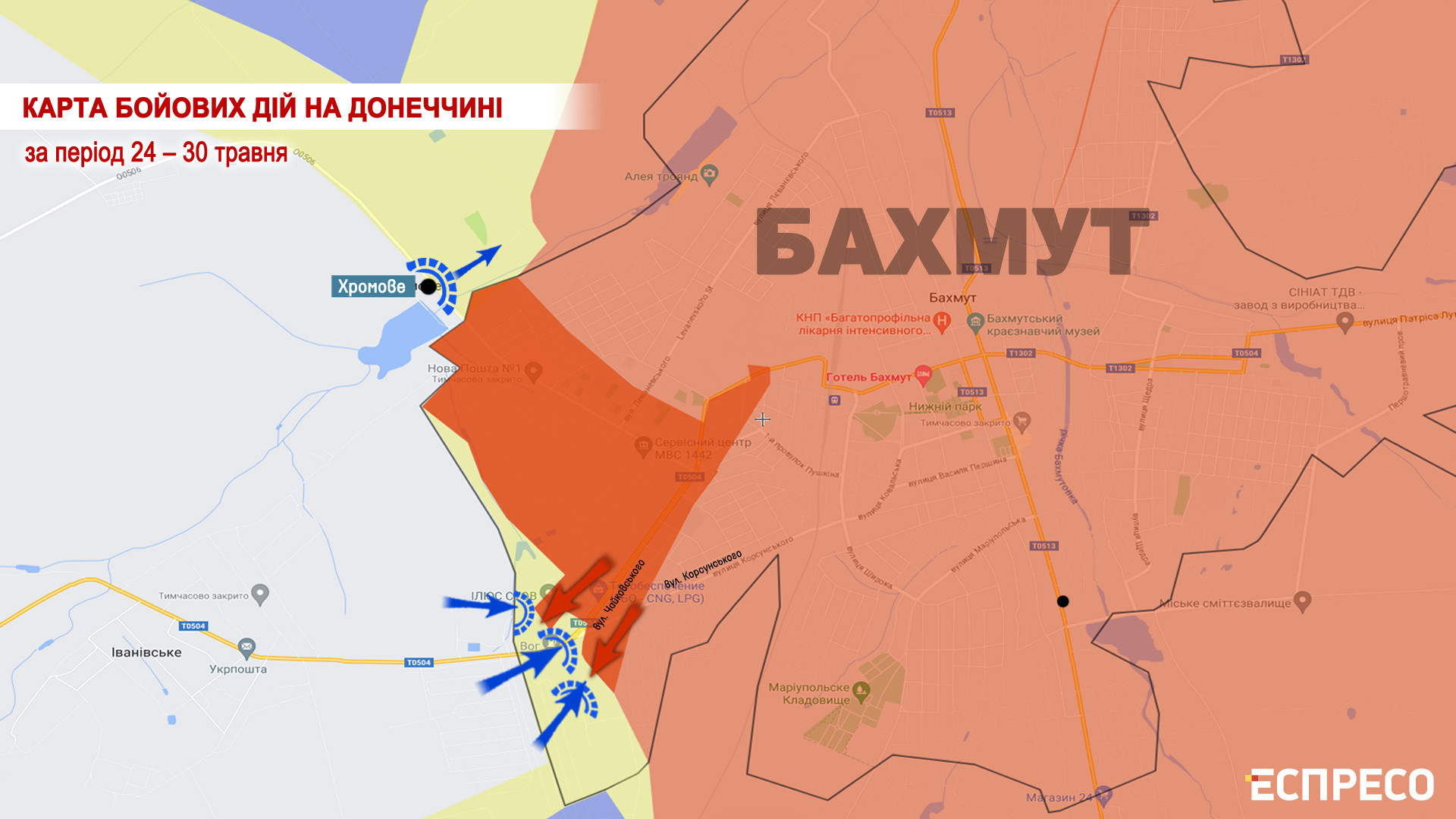
Meanwhile, the active hostilities have shifted to the southern and northern outskirts of Bakhmut for the past two weeks. Our troops are steadily advancing towards Klishchiivka, gaining several hundred meters in just a few days. According to frontline fighters, the capture of all dominant heights in front of the village is imminent.
From the northern front, the Armed Forces continue their advance towards Berkhivka, attempting to encircle it from both sides. Additionally, our military has intensified their offensive operations on the Sloviansk-Bakhmut road, particularly from the direction of Orikhovo-Vasylivka. If we manage to capture the heights along this route, Ukrainian soldiers will gain artillery control over the northern part of Bakhmut.
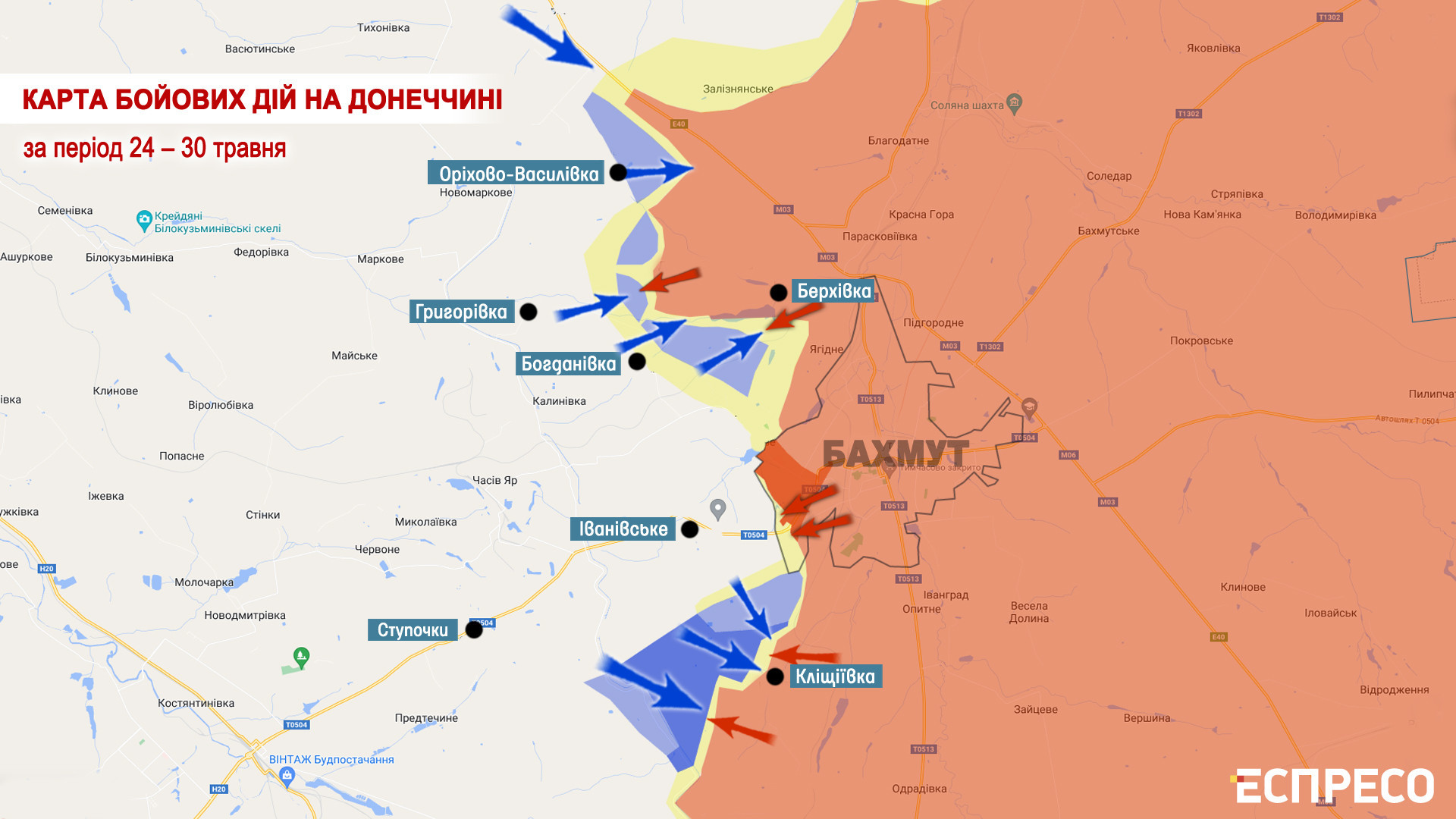
In the Luhansk region, intense fighting persists near the small village of Masyutivka, north of Kupyansk, while one of the longest battles of this war continues in the forest south of Kreminna.
Enemy activity in the Donetsk region has somewhat decreased due to the redeployment of military reserves to Bakhmut. Minor skirmishes occur near Avdiivka, and the Russians have refrained from launching attacks for several days. Their assaults near Marinka and Pervomaiske have only resulted in losses for the enemy.
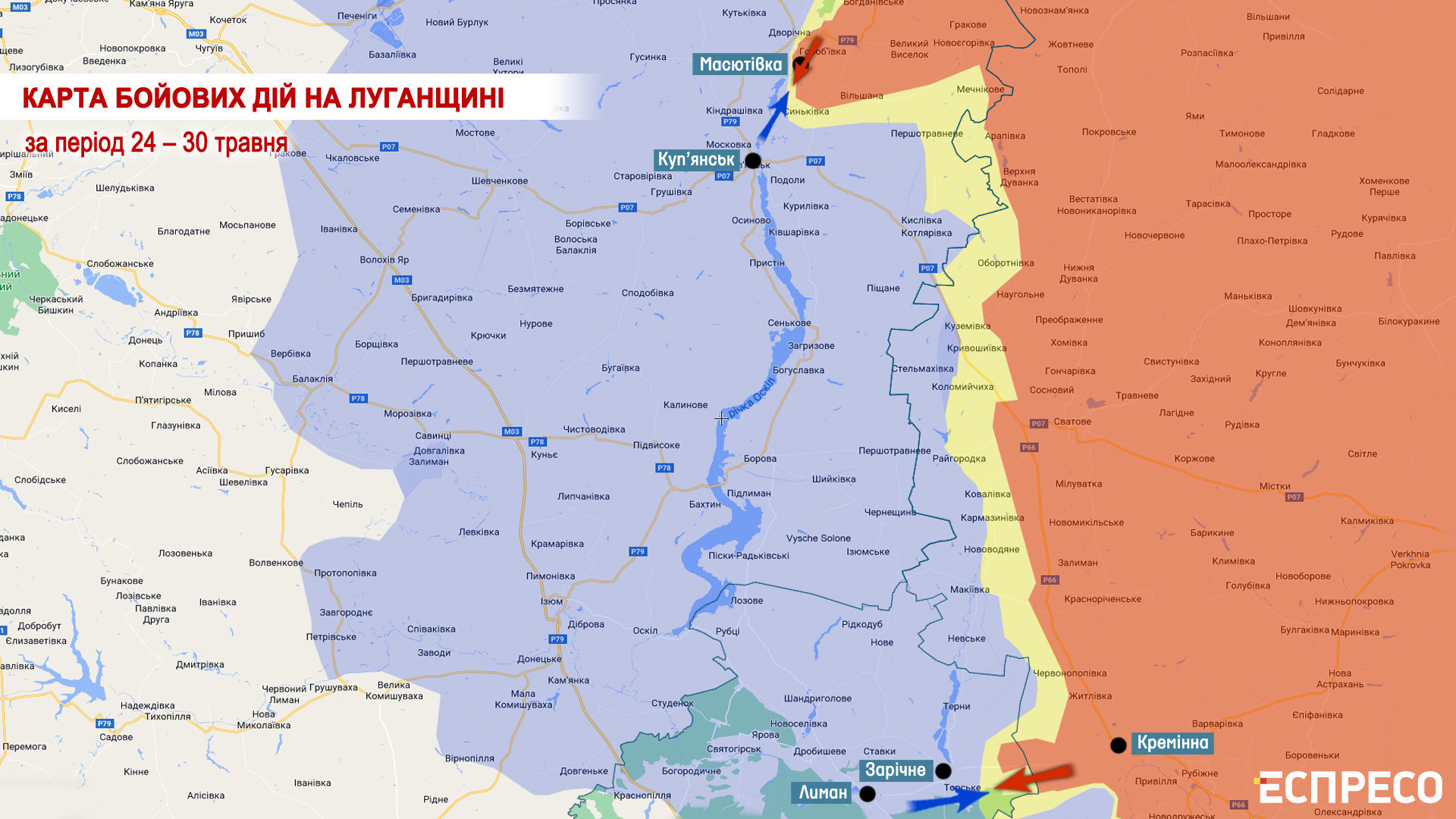
Counterattack puzzles
The Armed Forces of Ukraine have been conducting an offensive for several weeks, but unlike the Russians, our military command prioritizes the protection of our troops. Consequently, before launching assaults on enemy trenches and fortified areas, our artillery and aviation carry out preliminary strikes to weaken the occupiers' defense line. These strikes target ammunition depots, personnel bases, and command posts. The locations of these strikes clearly indicate the southeastern direction of our counterattack. Given the expansive geographic scope of liberating the south and east of Ukraine, the General Staff has the flexibility to choose the timing and location of our operations. This week, Ukrainian missiles, manufactured in Britain, destroyed six command posts, including those in Berdyansk and Mariupol, resulting in the destruction of over 10 high-priority targets. Additionally, the Armed Forces successfully targeted and destroyed enemy bases in Donetsk, Volnovakha in the Donetsk region, and near Kadiivka in the Luhansk region. In Zaporizhzhia, our artillery struck enemy bases in Vasylivka, Tokmak, the Melitopol airfield, and the Polohy district.
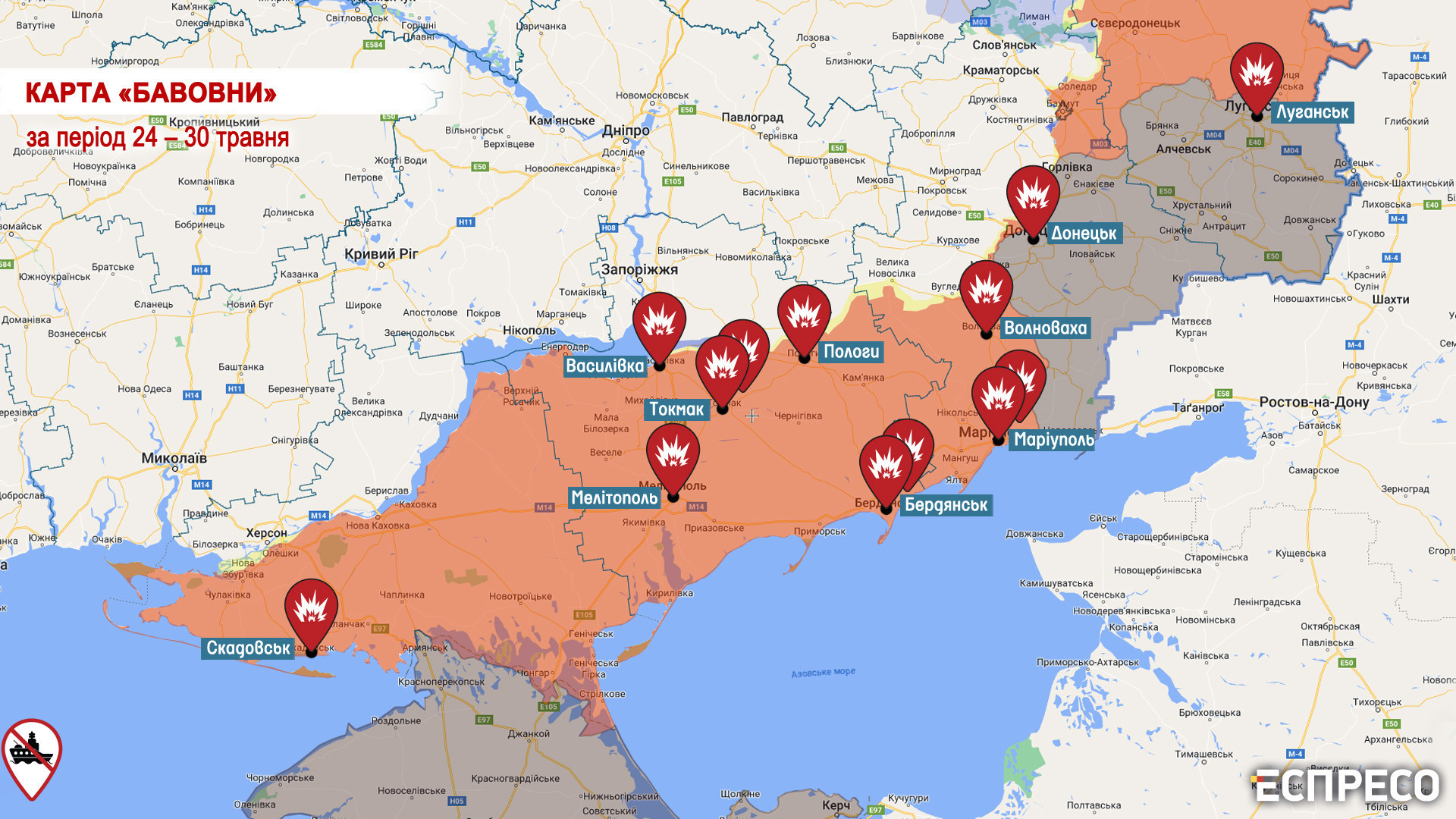
In the Black Sea, drones operated by the GUR (Main Intelligence Directorate) successfully targeted and struck the sole reconnaissance ship in the area, the Ivan Khursa. This vessel serves as a significant sea-based station for reconnaissance and electronic warfare. Despite sustaining damage, the ship managed to reach the port of Sevastopol for repairs.
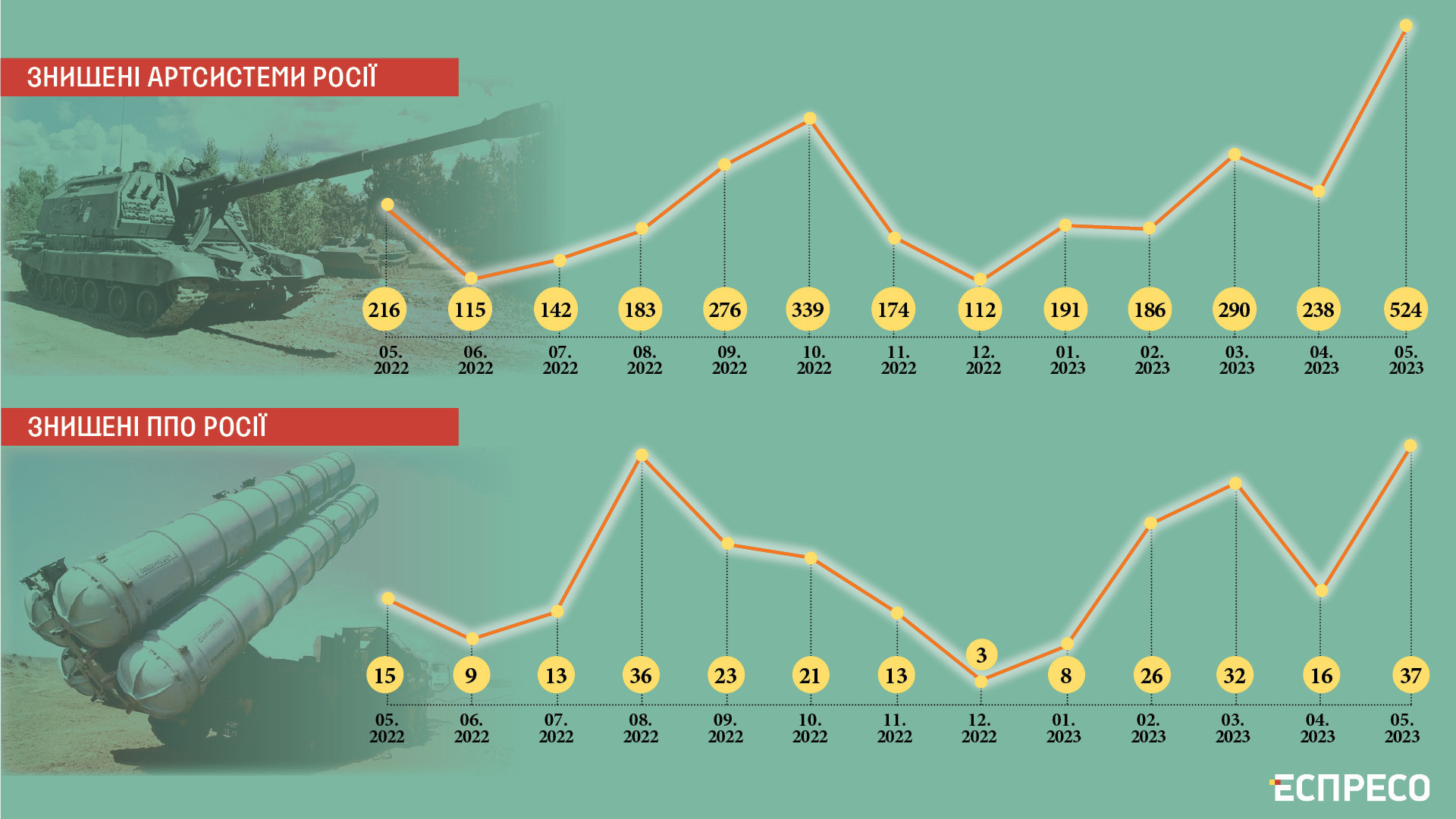
Throughout May, the Armed Forces achieved several records in terms of enemy destruction, providing insight into the prioritized targets during our counteroffensive. Notably, 524 artillery installations were destroyed, surpassing the previous record set in October, when our forces eliminated 339 artillery units during the offensive in the Kherson region. Additionally, in May, the Armed Forces destroyed a record 37 air defense systems, effectively clearing the sky for our aviation.
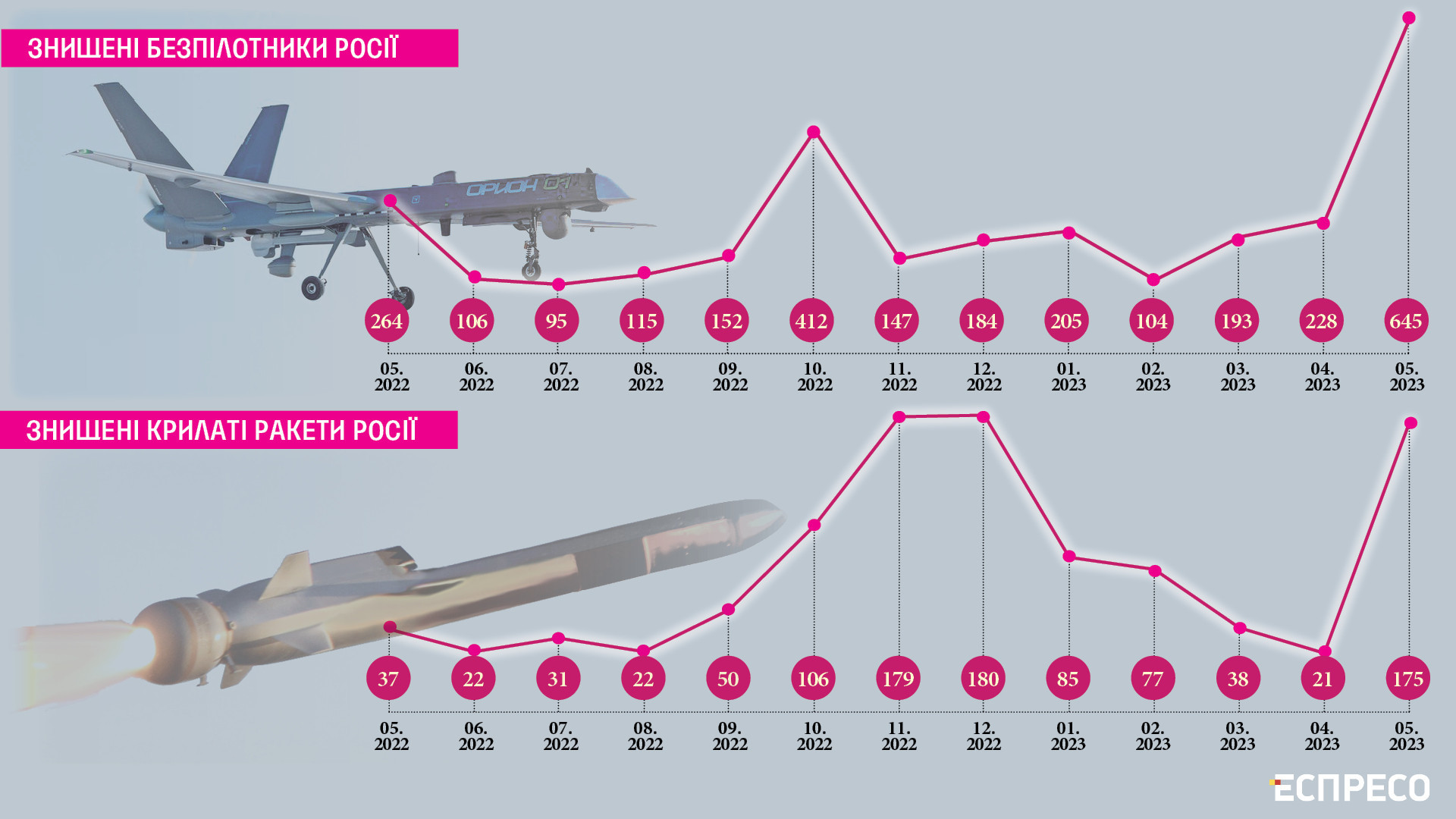
Simultaneously, the occupiers have focused their efforts on neutralizing Ukrainian air defense, particularly targeting the American Patriot systems. Almost daily, with only brief pauses, Kyiv, which is safeguarded by these Patriot systems, has experienced attacks from cruise missiles and russian drones. On May 28, the occupiers set another record by launching 54 Shahed drones across the capital. The intensity of this attack can only be compared to mass rocket launches during the early days of a full-scale war or terrorist attacks on critical infrastructure facilities during winter. However, unlike that period, the world's most professional air defense forces have successfully intercepted and destroyed nearly all missiles. In total, 175 missiles and 645 drones were neutralized over the course of a month.
Russia’s regions affected by explosions
A cloud of drones struck several targets in Moscow on May 30, causing significant disturbance. While the Kremlin officially stated that they successfully shot down "all" 8 drones, Russian social networks indicate that there were at least 25-30 UAVs in the sky. The specific targets of these strikes and the launch locations of the drones remain unknown. Nevertheless, this incident exposes the shortcomings of Moscow's defense system, raising questions about the competence of their own air defense capabilities. Furthermore, if the official Kremlin claims that the drones were launched by Ukraine’s Armed Forces, it reflects the vulnerability of their air defenses.
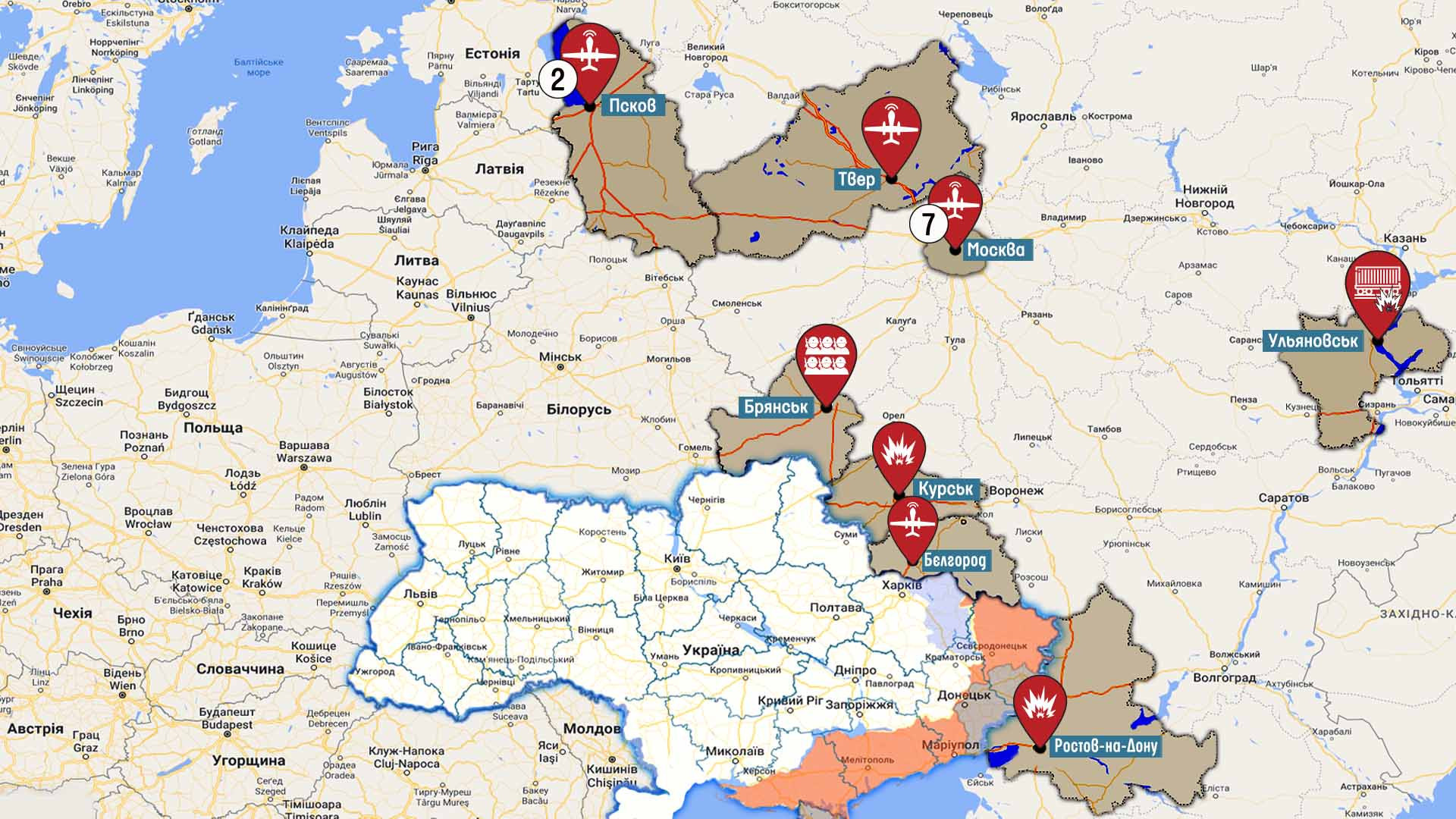
In addition, there has been an expansion in the geographical scope of drone attacks across Russia this week. Reports from Russian media confirm a drone attack in the Pskov region and strikes on an oil refinery in the Tver region. Unknown forces targeted the Ilsky Refinery near Krasnodar, while even Krasnodar itself experienced disruptions in its supply. The Bryansk, Kursk, and Belgorod regions are actively preparing to become demilitarized zones. Additionally, to explain the attack on the airfield in Rostov Oblast, the Russian authorities have resorted to inventing incredible means of destruction, which the Armed Forces of Ukraine do not possess, at least not officially.
The maps were created based on information received from the General Staff of the Armed Ukrainian Forces, as well as other open and verified sources. However, the maps are not completely accurate and only conditionally reflect trends in the combat zone.
- News











































